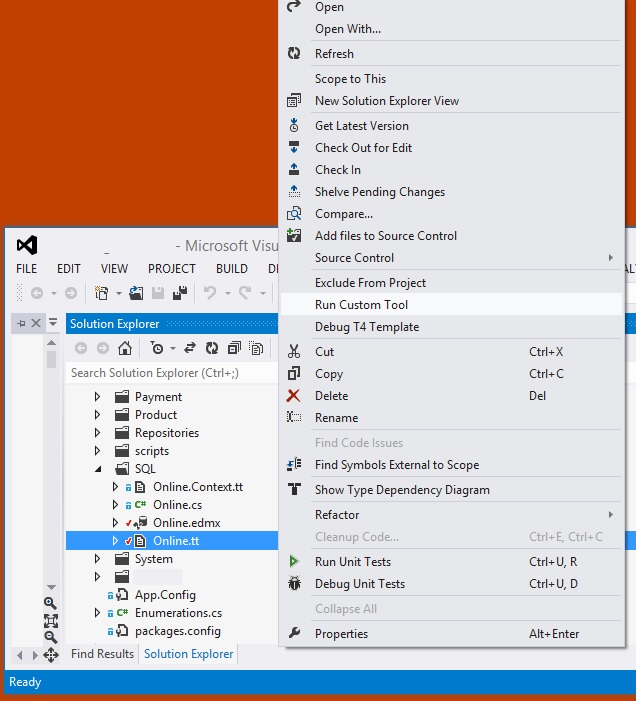- So I have my edmx made.
- Then I change my database a little bit, changing a column to from being a NOT NULL to allowing NULL.
- I go into my edmx, right click and choose "Update Model from Database"
Now I go into my program and it hasnt actually updated... I can't put a null in the column. What do I have to do to update the edmx properly? Thank you.

